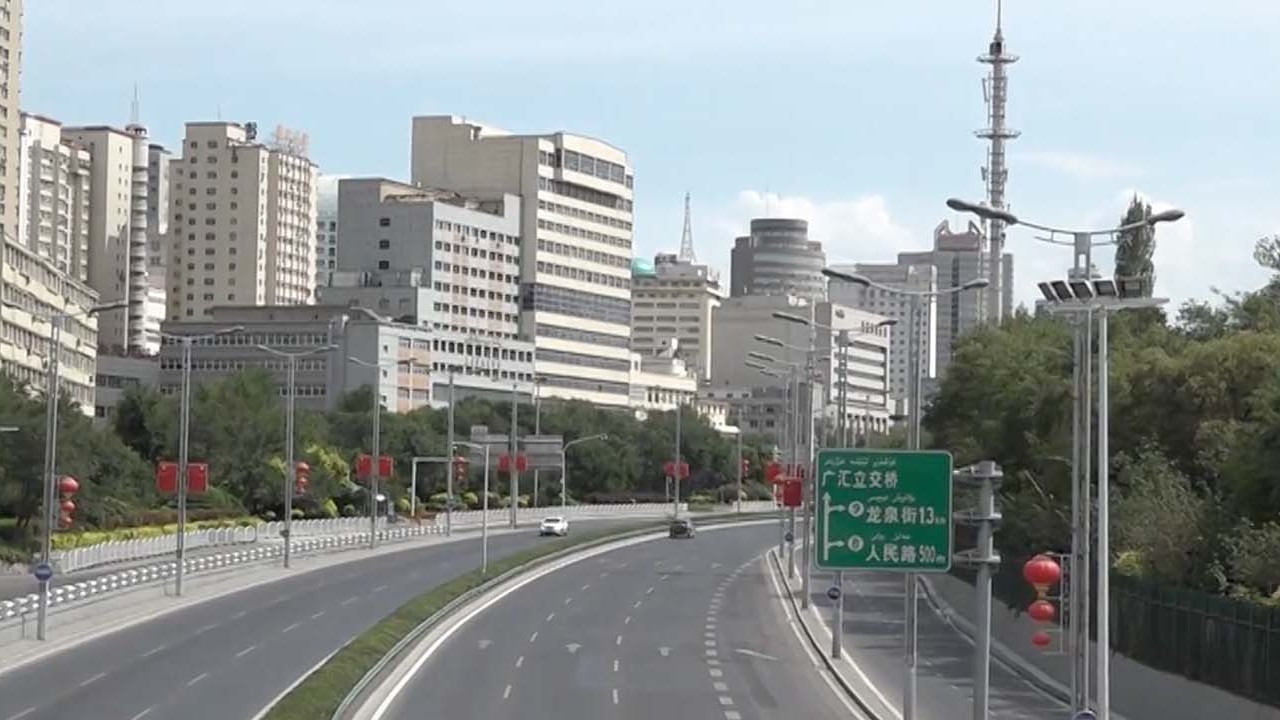
01:51
Xinjiang restricts outbound travel as officials admit to Covid-19 mistakes

More Covid-19 cases will emerge in Xinjiang in the coming days as the far western region faces “uncertainty”, according to its top disease control expert.
Outbreaks continued in the region’s major cities over the past week after cases had subsided last month, Ni Mingjian, chief expert with the Xinjiang Centre for Disease Control and Prevention, told reporters late on Wednesday.
Xinjiang officials have since urged local residents to stay put and not leave the region. All outbound passenger train services were suspended on Tuesday to stop the outbreak spreading to other provinces.
On Thursday, the region reported 97 new asymptomatic infections, including 40 in the capital Urumqi. There have been 452 asymptomatic cases since the latest outbreaks began in August.
According to Ni, there has been a rebound in cases in the past two days in regions such as Urumqi, Yining in Ili Kazakh autonomous prefecture, Korla and the Gaochang district in Turpan.
The chief expert attributed the rebound to four key factors.
“The sources of infection hidden in local communities have not been completely removed, and asymptomatic infections are continuing to spread in the community before they are detected,” he said.
Secondly, Ni said many quarantine staff in high-risk areas had worked on the front line for weeks, exposing them to the virus. He admitted that long queues of people waiting for PCR tests had also increased the risk of infection. In addition, improper collection of test samples and negligence by quarantine staff had made the situation worse.
“Some local residents failed to take proper care to protect themselves, did not wear face masks properly or didn’t wear them at all at gatherings, and some were infected through interaction with asymptomatic carriers,” he said.
And transmission in workplaces had accelerated in September when Xinjiang eased Covid-19 restrictions to resume work and production, he said.
“The reasons for the rebound of the epidemic are multifaceted, and some factors may overlap with each other, leading to a more complex prevention and control situation,” Ni said.
The official said the latest wave of coronavirus outbreaks was the “largest, longest-lasting and [the most infections seen] in our region so far, and it is still not under full control”. He warned that its development remained uncertain and more cases would be uncovered.
“The emergence of a large number of infected individuals in a short period of time has put tremendous pressure on local prevention and control resources, including nucleic acid testing resources, isolation resources, medical resources and community control resources,” he added.
On Tuesday, Liu Sushe, the vice-chairman of the Xinjiang Uygur autonomous region, conceded that the government had failed to contain the outbreak that started two months ago.
Xinjiang, which has had several rounds of lockdowns since 2020, appears to be overwhelmed by the latest wave of infections. The region is home to 22 million people and has been in partial lockdown since August.